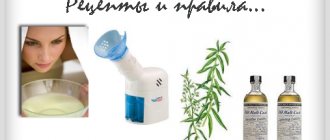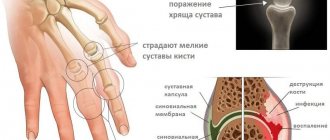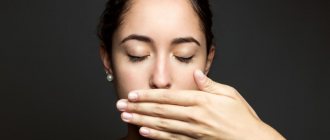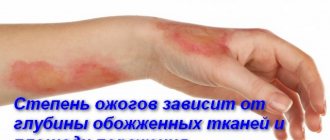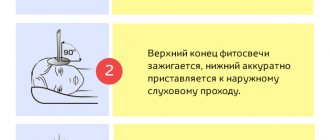Bronchitis is an inflammation of the bronchial tree without involving lung tissue in the pathological process. The disease can be caused by exposure to various factors: from toxic substances to bacterial and viral agents.
Regardless of the origin, the characteristic features of the disease will be inflammatory changes in the bronchial mucosa and impaired mucus production. At the same time, the amount of bronchial secretion increases, its separation is accompanied by a cough.
Bronchitis is an inflammation of the bronchi, but the lungs are not affected.
What is bronchitis?
This disease belongs to inflammatory pathologies and is localized in the tissues of the bronchi. It can appear as an independent disease or a complication of other respiratory ailments.
Reference. With bronchitis, the lung tissue is not affected. Inflammation is limited to damage to the bronchial tree.
The inflammatory process affects the mucous membrane, but sometimes it penetrates into the thickness of the walls. In any case, there is a disruption in the functioning of the cilia responsible for clearing the respiratory tract. An increased volume of secretory fluid is also formed.
Lifestyle and regimen for acute bronchitis
If proper measures are not taken to eliminate the symptoms of the disease, acute bronchitis will progress rapidly and lead to serious complications.
During treatment, the patient needs plenty of warm drinks, for example heated mineral water, tea with lemon, linden blossom or raspberry jam.
It is necessary to eliminate external factors that can become an irritant to the bronchial mucosa. In addition to complete abstinence from smoking, it is recommended to thoroughly clean the living space every day and isolate the patient from smoke-filled areas.
As for nutrition, the diet should include a large amount of vitamin products to improve the immune system.
Prevention
The most important rule for preventing bronchitis is maintaining personal hygiene. In addition to frequent hand washing, it is recommended to avoid crowded places, especially during flu outbreaks.
Children, the elderly and people with chronic diseases or immunodeficiency conditions must be vaccinated against influenza, pneumococci and Haemophilus influenzae.
The ideal time to administer the vaccine is mid-autumn.
Acute bronchitis, which seems harmless at first glance, can cause serious complications if not treated correctly. To avoid a dry, convulsive cough and unpleasant sputum discharge, you need to consult a specialist as soon as possible.
Even if the treatment is successful, the patient must reconsider his lifestyle and try to get rid of bad habits and consider the advisability of working in conditions harmful to health.
Reasons for the development of bronchitis
In most visits to the doctor, inflammation was a consequence of a primary infection entering the body. The disease usually has an infectious etiology, with the most common pathogens being:
- viruses: adeno-, rhino-, enteroviruses, parainfluenza, influenza and measles;
- fungi: aspergillus, candida;
- bacteria: staphylococci, whooping cough pathogen, mycoplasma, Haemophilus influenzae, chlamydophila, streptococci.
Viruses occupy a leading position among all pathogenic microorganisms: about 85% of cases. Fungal bronchitis is much less common, since the immune system effectively fights its occurrence. However, if the body's defenses are significantly undermined, for example, after chemotherapy or other procedures for treating oncology, mycotic damage is possible.
Preparing for your appointment
You'll probably start by seeing your family doctor or general practitioner. If you have chronic bronchitis, you may want to see a doctor who specializes in lung disease (pulmonologist).
What can you do
Before your appointment, you may need to write a list that answers the following questions:
- Have you recently had a cold or flu?
- Have you had pneumonia?
- Do you have any other medical conditions?
- What medications and supplements do you take regularly?
- Are you exposed to lung irritants at work?
- Do you smoke or are you around tobacco smoke?
You can also invite a family member or friend to the meeting. Sometimes it can be difficult to remember all the information provided. Someone accompanying you may remember what you missed or forgot.
If you have ever seen another doctor for your cough, let your current doctor know what tests were performed and, if possible, bring the reports with you, including the results of a chest x-ray, sputum culture, and pulmonary function test.
What to expect from your doctor
Your doctor may ask you several questions, such as:
- When did the symptoms start?
- Were your symptoms constant or occasional?
- Have you had bronchitis before? Has it been more than three weeks?
- Have you noticed that between bronchitis pains you are breathing more than the year before?
- Are your symptoms affecting your sleep or work?
- Do you smoke? If yes, how much and how much?
- Have you inhaled illegal drugs?
- Are you working out? Can you climb one flight of stairs without difficulty? Can you walk as fast as before?
- Does anything make your symptoms better or worse?
- Are you worried about cold air?
- Have you noticed that you sometimes wheeze?
- Have you ever gotten the annual flu?
- Have you ever been vaccinated against pneumonia? If yes, then when?
Share link:
- Click to share on Twitter (Opens in new window)
- Click here to share content on Facebook. (Opens in a new window)
- Click to share on Telegram (Opens in new window)
Liked this:
Like
Similar
Factors contributing to the occurrence of bronchitis among adults
Typically, diseases affect those who lead an unhealthy lifestyle, which provokes the appearance of pathology. In the case of bronchitis, the disease is more common in people who:
- live or work in conditions where the air is damp, dusty, smoky, or where the temperature changes sharply;
- often inhale air with chemical impurities of ammonia, chlorine, alkalis, acids;
- abuse alcohol and smoke tobacco;
- have heart and vascular diseases that lead to congestive processes;
- have chronic pathologies of the nasal and oral cavity;
- genetically predisposed to allergies and respiratory system disorders.
Important! Smoking harms not only the smoker himself, poisoning his lungs and bronchi. The people around him also experience a detrimental effect, so children in families where someone in the household smokes are more likely to suffer from bronchitis.
Prevention of acute bronchitis
Acute bronchitis, like other inflammatory diseases, is easier to prevent than to treat. To do this, it is recommended to follow a number of simple procedures:
- compliance with sanitary and hygienic rules,
- rejection of bad habits,
- compliance with the daily routine, work and rest,
- fortified and balanced nutrition,
- strengthening the immune system,
- avoid hypothermia,
- hardening,
- active lifestyle, playing sports.
Acute bronchitis is not a death sentence, it is just an inflammatory disease of the respiratory system, which can be treated quickly and well, but only under the supervision of a qualified doctor. Therefore, when the first symptoms occur, you should not hesitate; you should immediately go to the hospital to receive effective medical care.
Classification
The disease has several varieties depending on the symptom.
Bronchitis can affect both bronchi, then it is called bilateral. Usually there is a one-sided appearance.
Based on the severity of bronchitis, there are mild, moderate and severe degrees of severity.
The clinical course defines two stages:
- spicy;
- chronic.
The classification of pathology is important for the attending physician, since its symptoms determine therapeutic methods.
Acute bronchitis
This is the first stage of the development of the disease. The appearance of acute symptoms of bronchitis in adults can be triggered by an existing respiratory tract infection or together with it.
The main reason for the formation of acute inflammation of the bronchi is viruses and viral-bacterial infections. Less common is a disease caused by bacterial activity. Pathology begins to develop from the upper parts of the respiratory system: nasopharynx, trachea, tonsils, after which it moves to the bronchi.
The virus is capable of aggravating changes in the mucous membrane due to the proliferation of microorganisms, which is why it swells and increases in size.
Acute bronchitis is classified according to:
- severity of respiratory failure;
- results of laboratory tests of sputum and blood;
- examination of the bronchi using x-rays.
Based on the results of the tests, the disease is classified as a specific type:
- Catarrhal. This is a milder form of the disease, which is characterized by chills, hoarseness, severe runny nose and copious sputum production. A dry cough usually develops after a couple of days and torments a person for quite a long time.
- Purulent. In this case, there is a layer of bacterial infection. The patient is bothered by wet coughing, shortness of breath, and sweating.
- Purulent-catarrhal. This is a mixed type, which may include symptoms of both types of bronchitis.
- Atrophic. With this form of the disease, there is a narrowing of the lumen of the bronchi and their filling with sputum, as a result of which the volume of incoming oxygen decreases.
Basic principles
Strengthening the bronchi and their resistance to the effects of pathological factors is the main goal of measures to prevent the development of the inflammatory process in them. Frequent bronchitis in adults and untimely treatment lead to serious complications - pneumonia, bronchial asthma, cardiopulmonary failure, emphysema (pathological expansion of bronchioles and pulmonary vesicles), purulent inflammation of the bronchi and others. Basic preventive measures:
- strengthening the immune system, improving the protective properties of the mucous membranes of the respiratory system;
- proper nutrition - intake of sufficient amounts of proteins, fats, carbohydrates, minerals, vitamins, water into the body;
- cessation of smoking, harmful working conditions;
- Spa treatment;
- timely treatment of concomitant diseases.
Immune stimulation
Ways to strengthen the bronchi are simple. It is important to carry out preventive measures regularly and use effective methods. These include:
- Hardening. This is an important procedure that helps mobilize the body's defenses in low temperatures. Air, water, sun are the main hardening factors. Regularity, dosage, gradualism, complexity are the main principles of hardening procedures.
- Ethnoscience. There are special herbal mixtures for the treatment and prevention of bronchitis . Medicinal infusions are prepared from them and consumed hot. Herbal teas are popular for strengthening the immune system.
- Taking medications. If prescribed by a doctor, you can take pharmacological drugs that stimulate the production of T-lymphocytes. These cells are an important part of the immune defense. Vitamin and mineral complexes have a general strengthening effect on the body. It is advisable to practice their use at the end of winter, early spring, when symptoms of hypovitaminosis appear.
Nutrition
At the first signs of illness (runny nose, cough, general weakness), you need to reconsider your diet. How quickly recovery occurs depends on nutrition. Food should be digested quickly and well. It should contain a large amount of vitamins and minerals. You need to eat small portions 4-6 times a day so as not to overload the intestines.
The diet must be followed for 3-4 weeks. It is important that the body directs all its forces to fight the disease or mobilize immune defense. For prevention and during illness, adults should include the following foods and dishes in their diet:
- potato;
- semolina;
- chicken bouillon;
- rich soups;
- lean meat and fish;
- salads from fresh and boiled vegetables;
- honey;
- sweet fruits;
- dried fruit compotes;
- fruit drinks;
- blackcurrant and raspberry jam.
Exclude from the dietary menu for bronchitis and its prevention:
- fried, spicy, salty, fatty;
- coarse porridge;
- toast, crackers;
- shortcrust pastry;
- tough meat;
- spinach, sorrel.
- Coughing attacks in children and adults
- The first signs of tracheitis in adults and children - symptoms, diagnosis and treatment at home
- How to treat dry cough in adults and children
Rejection of bad habits
Cigarette smoke has a detrimental effect on the bronchial mucosa. Combustion products and resins block the secretory activity of the bronchial glands, their structure changes, and pathological changes occur. In smokers, bronchitis occurs in a chronic form, and the risk of developing malignant neoplasms increases. After suffering from an illness, it is necessary to get rid of a bad habit in order to avoid relapse.
Prolonged work in the cold with high air humidity causes spasm of blood vessels and a decrease in blood flow in the bronchi. Working in unfavorable conditions provokes atrophy of the bronchial glands and progression of pathology . This type of bronchitis in adults is called professional bronchitis. To prevent bronchial asthma, as a consequence of this type of disease, it is necessary to avoid exposure to allergens, hookah smoking, and inhalation of toxic substances.
Timely treatment of diseases
In some cases, the development of pathology is preceded by activation of a focus of chronic infection (for example, the oral cavity, the maxillary sinus). Pathogens, along with sputum and saliva, enter the respiratory tract. In most cases, this occurs at night when the epiglottis is relaxed. Considering this fact, it is necessary to promptly treat carious teeth, monitor the condition of the tonsils and oral mucosa, and get rid of a runny nose.
First signs
The most characteristic symptom of bronchitis is a severe wet cough. During the period of illness, up to 100 ml of bronchial secretion can be released per day.
In fact, mucus is constantly produced in the bronchi, but in normal conditions its volume does not exceed 30 ml. The main function of this liquid is to remove dust, dirt and other foreign impurities from the respiratory tract.
In this way the protective function is carried out. However, with inflammation of the bronchi, the work of the tissues responsible for the production of secretions is disrupted, and there is too much of it. In addition, it acquires a characteristic viscosity, which makes its removal difficult.
Traditional medicine in the treatment of acute bronchitis
Traditional medicine recipes can also alleviate the patient’s condition and help him recover faster.
Drink plenty of warm infusions, herbs, herbal teas, fruit drinks made from raspberries or currants.
- Drinking alkaline mineral water such as “Borjomi”, “Polyana Kvasova”, “Essentuki No. 4”. These waters can be drunk, used for inhalation, or warm milk can be prepared with the addition of alkaline water (3:1).
- No less effective is the use of cough syrup made from red viburnum berries and sugar.
- Warm boiled milk with figs will help overcome attacks of suffocating cough. To prepare it, take 1 glass of milk and 1-2 figs. When the milk comes to a boil, add the washed figs and boil for 3-5 minutes. When the milk has cooled down, you need to drink the prepared cocktail and go to bed in a warm bed.
Symptoms of bronchitis in adults
The appearance of mucus in the respiratory tract is the first sign of the disease, but its color and consistency change over time. Sputum from a wet cough may be whitish, slightly yellowish or greenish. A change in shade indicates old pus due to the active activity of microorganisms.
Important! Sometimes, as you cough, blood clots appear due to the rupture of blood vessels in the airways, which happens quite often during severe coughing. However, the reasons may be concomitant diseases - and this is a good reason for a full examination.
With dry coughing, wheezing sounds are heard from the chest. In addition, symptoms of bronchial inflammation include difficulty breathing, which can lead to suffocation. Such attacks are typical for bronchial asthma and require timely use of an inhaler.
A sore throat and constant spasms make it difficult to eat and talk. There is also a headache, which occurs due to lack of oxygen. At the initial stage, the patient’s temperature rises, but, as a rule, it does not reach dangerous levels.
//youtu.be/0vipuxJdsoA
Obstructive bronchitis
Acute obstructive bronchitis is characterized by the presence of bronchial obstruction syndrome. As a rule, this disease manifests itself in children in the second or third year of life. With this form of bronchitis, symptoms of bronchial obstruction often appear immediately after the onset of ARVI. In more rare cases, obstructive bronchitis appears two to three days after the onset of the disease. The child is breathing heavily, the breathing is wheezing, the exhalation is prolonged, and wheezing can be heard from a distance. Children show anxiety, but their general condition is satisfactory. The child can maintain normal body temperature. There is swelling of the chest. Treatment of obstructive bronchitis is aimed at restoring bronchial patency. In this case, the same methods are used as in the treatment of acute bronchitis. However, it should be borne in mind that pneumonia is a common complication of obstructive bronchitis.
Diagnostics
The doctor needs to draw up a clinical picture that fully describes bronchitis. Treatment in adults and children depends on the classification of the disease, which determines further treatment, so the diagnostic stage should not be skipped.
The first stage is an examination and interview of the patient, during which he talks about the timing of the onset of symptoms.
The second stage is auscultation. The procedure is carried out using a stethoscope, which allows you to detect wheezing and other sounds characteristic of bronchitis. The instrument is applied to the patient's chest and back during inhalation and exhalation, and the doctor can “hear” the disease. The method helps to determine the type of respiratory disease and draw primary conclusions.
The third stage is a blood test. This is standard procedure for many ailments, as chemical changes in the blood indicate inflammation. Viral bronchitis causes a decrease in the number of immune cells and an acceleration of erythrocyte sedimentation. If the inflammation is caused by bacteria, then an increase in the level of white blood cells is noticed.
treatment
Most cases of acute bronchitis improve without treatment, usually within a couple of weeks.
medications
Since most cases of bronchitis are caused by viral infections, antibiotics are not effective. However, if your doctor suspects you have a bacterial infection, he or she may prescribe an antibiotic.
In some cases, your doctor may recommend other medications, including:
- Cough medicines. If your cough is keeping you awake, you can try suppressing your cough before bed.
- Other medications. If you have allergies, asthma, or chronic obstructive pulmonary disease (COPD), your doctor may recommend an inhaler and other medications to reduce inflammation and open narrowed areas in the lungs.
Treatment methods
If you have chronic bronchitis, you may benefit from pulmonary rehabilitation, a breathing exercise program in which a respiratory therapist teaches you how to breathe easier and improve your exercise capacity.
Treatment of bronchitis in adults
Correct diagnosis is necessary to eradicate chronic and acute bronchitis. Symptoms and treatment in adults depend on the type and stage of the disease, so medications and folk remedies will be determined by the final diagnosis.
Drugs for bronchitis in adults
Antibiotics are necessary to treat inflammation of the bronchi, which is caused by the activity of pathogenic microorganisms:
- Ospamox. This pharmaceutical product belongs to the group of penicillins. Usually a medication with clavulanic acid is prescribed, since the therapeutic period is 1 week.
- Azithromycin. This is a powerful antibiotic that helps cure the disease in 5 days.
- Amoxicillin. The drug has a wide spectrum of action, and it rarely causes adverse reactions. However, in some cases resistance to the active component appears.
Bronchodilators help ease breathing and provoke the flow of mucus:
- Fenoterol-Nativ. The product is used as a solution for inhalation. The drug is diluted in sodium chloride.
- Theotard. The tablets do not need to be divided or chewed. Before use, you must take a blood test to determine the level of theophylline.
- Teopek. Suitable for the treatment of adults and children, as it shows good tolerability and a relatively small number of side effects. Chewing and splitting tablets is also undesirable.
Bromhexine, ACC in the form of effervescent tablets, Fluimucil and Ambroxan are good for wet coughs with bronchitis. These drugs are intended to remove and thin sputum. Due to this, an expectoration effect is created.
If bronchitis is caused by viruses, then the doctor prescribes antiviral drugs to the patient: Kipferon, Grippferon in the form of drops, Giaferon.
Folk remedies for bronchitis
Alternative medicine can alleviate the manifestations of many respiratory diseases, but it should not be treated as the main method of treatment.
Wraps and ointments based on various products warm and penetrate the bronchi, improving mucus separation and relieving pain:
- Unrefined vegetable oil. Take ¼ of the product, place it in a water bath and bring to a boil. After this, you need to soak the towel with oil that has cooled slightly to a comfortable temperature. The compress is fixed on the chest using cling film.
- Butter. Take 1 tsp. dairy product and 2 tsp. honey, mixed and placed on the stove. Over low heat, the mixture should become homogeneous. After cooling, the ointment is applied to the chest, preferably before bedtime, and wrapped with cling film on top.
Effective oral agents are also common:
- Lard, butter, sugar (500 g each) are mixed and boiled on the stove for about 5 minutes. Next you need to add 3 tbsp. l. cocoa and continue cooking for another 7 minutes. At the end, buckwheat honey (also 500 g) is poured in. The medicine is washed down with warm milk.
- Honey, wax, pine resin and sunflower oil (250 g each) must be mixed and placed on low heat. The product is not brought to a boil. The result is approximately 1 liter of medicine, which must be stored in the refrigerator.
One of the popular home remedies is a decoction of pine buds. It not only treats cough and bronchospasms, but also has a beneficial effect on all body systems.
Important! Treatment of bronchitis at home in adults must be approved by a doctor, since the patient may not be aware of the potential intolerance to the components. Allergy as a concomitant disease will only aggravate the course of the inflammatory process.
How can you not treat bronchitis?
Treatment of inflammation of the respiratory tract is a serious procedure, since it can lead to many complications, including failure of the respiratory system.
Treatment methods
The recovery course must be comprehensive. Such treatment of bronchitis in adults will help not only improve the general condition, but also avoid the development of complications. Therapy must be approached responsibly, following all recommendations of the pulmonologist.
Medication course
In the treatment of bronchitis in adults, the main role is given to medications. Mucolytic agents are used, which promote easier sputum discharge. Lazolvan or Bromhexine are most often used.
Antitussives may be required. You can’t do without them if you have an unproductive but painful cough. Pulmonologists recommend using Libexin and Sinekod.
Antibiotics deserve special attention in the treatment of bronchitis in adults. Prescribed compounds from the tetracycline series - Amoxiclav, Cephalosporins. Use is advisable only in case of aggravated disease or frequent relapses. In this case, a special procedure is carried out to determine the sensitivity of a particular pathogen to the drug. Based on the data obtained, the necessary antibiotics are selected.
When bronchitis in an adult is accompanied by an increase in temperature, specialists prescribe antipyretic compounds. This could be Aspirin or Paracetamol. It is recommended to use them infrequently because there are certain limitations. Aspirin, for example, is not used for any form of gastritis, gastric or duodenal ulcer. All this must be taken into account in the treatment of bronchitis in adults.
Physiotherapy methods
The rehabilitation course would be incomplete without additional procedures. The sternum is warmed up (only after the condition has normalized during an exacerbation), massage, and special breathing exercises. The latter helps restore normal breathing and relieve shortness of breath.
Treatment of any bronchitis in adults should not be done without inhalations, for which they use:
- Dioxidin is a universal antiseptic. It is used when the chronic form of the disease worsens or when it is viral.
- Atrovent. It is a bronchodilator. It is sold in the pharmacy in liquid form.
- Fluimucil. This medication loosens or thins the exudate. It is intended specifically for inhalation - it is not required to dilute it for the usual procedure, but in special cases this may still be necessary.
- Lazolvan. This is a bronchodilator. It helps relieve cough and symptoms of shortness of breath. Pharmacy chains sell a special form for inhalation.
In the treatment of bronchitis in adults, it is recommended to use a nebulizer. This is a special device that ensures the most uniform distribution and spraying of the medication throughout the bronchi.
Folk remedies
Additionally, after consulting a specialist, you can use alternative medicine recipes. For example, if an adult has bronchitis, it is recommended to apply compresses to the chest. They can include a variety of components: from boiled potatoes in their skins to an alcohol solution or honey and white cabbage.
Inhalations are also used, exclusively with natural ingredients. It is acceptable to use thyme or sage leaves, because they neutralize the inflammatory reaction. Use the flower part of chamomile (acts as an antiseptic), oregano or mint (soothe and relax the bronchi, help cope with a coughing attack in an adult).
Possible complications
If treatment was not carried out in full or was started later than necessary, certain consequences are possible. Most often this is bronchial asthma.
Bronchitis in an adult can be complicated by:
- cardiovascular failure;
- bronchiectasis – suppurative processes in the bronchi;
- pulmonary hypertension - increased vascular resistance;
- bronchopneumonia – develops due to aggravated immunity and is a consequence of acute bronchitis;
- chronicity of the pathological condition;
- emphysema;
- obstructive disorders in the structure of the bronchial tree.
If the urge to cough is accompanied by the removal of exudate with blood or clots, it is strongly recommended to be tested for the presence of more dangerous pathological conditions. It could be tuberculosis or lung cancer.
Complications
The consequences of untreated bronchitis can vary. Usually the patient is overtaken by bronchopneumonia. Its symptoms include high body temperature, coughing, shortness of breath, chest pain, rapid pulse and weakness. Complications can also affect the heart: the right ventricle muscle enlarges and weakens, causing pain and heart failure. Fainting often occurs.
The appearance of bronchiectasis is also likely, the main feature of which is irreversible dilatation of the bronchi. Along with it, a purulent-inflammatory process develops, copious sputum production and a wet cough.
Another serious complication is pneumonia. The disease makes itself felt by severe weakness in the limbs, fever, shortness of breath and lack of oxygen. At first, the cough is unproductive, but then the release of bronchial secretions begins.
Bronchitis and its forms
Acute bronchitis occurs as a cold, followed by localized chest pain.
The disease can be triggered by decreased immunity, frequent respiratory diseases, or the spread of infection and inflammation from other organs.
Chronic bronchitis causes difficulty breathing and coughing
Chronic disease is caused by smoking or poor environmental conditions, such as dust.
When the disease occurs, mucus is intensely secreted in the bronchi. In order for the body to cleanse itself of it, a cough appears. Acute bronchitis occurs:
- simple, in which obstructive phenomena do not appear;
- obstructive - obstruction of air passage;
- obliterating - a severe form, which in addition to coughing is also characterized by shortness of breath;
- bronchiolitis - the formation of calculi (stones) in the bronchi.
With obstructive bronchitis, the patient experiences difficulty breathing
If left untreated or incompletely treated, the disease can become chronic, in which bronchitis recurs 2-3 times a year. This disease is also divided into several types:
- simple - without disrupting the breathing process;
- purulent, also possible without serious breathing problems;
- obstructive;
- purulent with obstruction.
If the sputum acquires a yellowish or dark tint, then a transition to purulent bronchitis is possible. It may be a consequence of improper treatment or acute respiratory infections. Usually with this form there is significant discharge of sputum with pus.
Purulent bronchitis can become a complication if a cold cough is not treated correctly
In addition to the transition of bronchitis from an acute to a chronic form, the lack of adequate treatment can lead to complications such as pneumonia, bronchodilator effects, and even contribute to the occurrence of pulmonary emphysema.
A disease in which breathing and gas exchange are impaired is called pulmonary emphysema. Changes in the bronchi as a result of chronic bronchitis lead to a narrowing of air exchange pathways. When breathing, more air remains in the lungs than should normally be present. A kind of stretching of tissues occurs in which air is retained and does not perform its functions normally. With emphysema, breathing is very difficult and shortness of breath occurs.
Prevention
It often happens that if a person has had any disease, there is a high chance of relapse. Bronchitis in this case is no exception, so it is recommended to follow some rules that help reduce the likelihood of the disease returning:
- Maintain a daily routine. The body does not tolerate the change in the beginning of sleep and wakefulness, so it is necessary to adhere to a certain tradition. Despite the existence of the so-called “larks” and “night owls,” you should go to bed no later than 12 o’clock at night.
- Every year there are outbreaks of some disease. During epidemics, it is necessary to further strengthen the immune system and use additional protective equipment, for example, medical masks or Oxolinic ointment.
- A hardened body gets sick less. However, hardening should begin with simple procedures, and not immediately dive into the ice hole.
- It is necessary to quit bad habits, as they poison the body. Moreover, smoking and alcohol cause not only bronchitis, but also a whole galaxy of related diseases.
- You need to dress for the season. To save yourself from colds, which can cause pneumonia, it is recommended to keep your feet warm and protect your throat.
- Communication with contagious people should be limited. Many respiratory diseases are transmitted by airborne droplets.
An equally important point of prevention is proper nutrition. It is through food that a person receives vitamins, minerals, micro- and macroelements, with the help of which a strong immune system is maintained. In winter and spring there are few fresh fruits and vegetables, so you need to take additional vitamin complexes.
When treating bronchitis, it is important to take thoughtful measures, so you should visit your doctor. At the first symptoms, you should not delay making an appointment, as the disease can develop quite quickly and lead to complications.
//youtu.be/EnxCMAzY52A
Causes
People over 50 are considered to be at greatest risk.
This statement is largely true, but there are several other factors that cause the disease:
- Poor living conditions;
- Hypothermia of the body;
- Low body weight;
- Poor ecology and polluted environment;
- Poor nutrition;
- Bad habits;
- Household dust.
The highest percentage of people suffering from bronchitis is observed in regions with high dampness and constant rainfall.
An important role in the occurrence of the disease is played by a lack of alpha-1 antitrypsin in the body, caused by poor heredity.
The vast majority of patients constantly smoke or work in conditions of constant contact with dust, fur and other small particles that enter the lungs. This is especially true for the baking, wool and chemical industries.
Most often, the causative agents of acute bronchitis are bacteria, viruses, fungi, inhaled toxic substances and allergens. The disease is transmitted by airborne droplets through contact with a sick person.
Complications and consequences
Acute bronchitis usually lasts 7-10 days and affects only the bronchial mucosa. There are a number of circumstances that can lead to complications:
- incorrect or untimely diagnosis;
- violation of the regimen prescribed by the doctor;
- unfinished treatment;
- childhood or old age;
- hereditary diseases of the respiratory organs;
- disruptions in the gastrointestinal tract;
- decreased immunity;
- smoking and working in contact with harmful substances.
If the treatment of acute bronchitis is not given due attention, it becomes chronic. The inflammatory process affects not only the bronchial epithelial cells, but also deeper tissues, leading to disruptions in the functioning of the respiratory tract.
Bronchitis is considered chronic if the cough continues for more than 3 months for two years in a row.
Advanced acute bronchitis can lead to pneumonia or bronchopneumonia. In adults, cases of such complications are rare.
Those at greatest risk are the elderly, children, people with severe diseases of internal organs, immunodeficiency conditions and oncology, as well as pregnant women.
Pneumonia is especially dangerous for children, whose immature immune system cannot resist the inflammatory process. It is among children that the greatest number of deaths occurs.
Symptoms of allergic bronchitis
Inflammation of the lower respiratory tract is not in all cases associated with infectious microflora. In some patients, the process develops with increased sensitivity of the immune system to certain allergens. The disease most often manifests itself in preschool age, but can last a lifetime.
There are several features by which bronchitis of allergic origin can be distinguished from infectious bronchitis:
- cough is dry or with little sputum production, worsens upon contact with an allergen or at night;
- the inflammatory process does not affect the small bronchi (unlike an asthmatic attack);
- when exhaling, wheezing and shortness of breath are heard;
- Additional symptoms may appear in the form of swelling of the nasal mucosa, runny nose, skin rash, itching;
- body temperature remains within normal limits, but weakness and muscle aches are present.
Allergic bronchitis can be indirectly determined by blood tests. It will reveal an increased amount of eosinophilic components - this phenomenon is absent in infectious inflammation. However, these same elements increase during helminth infestations and other conditions. The most informative method to find out the cause of hypersensitivity of the immune system is allergy tests (samples). They are carried out by introducing small amounts of different allergens and determining the body's reaction.
Treatment of chronic bronchitis
- An indispensable condition is the elimination of the provoking factor: quitting smoking is a prerequisite! Treatment of chronic infections of the nasopharynx - tonsillitis, sinusitis - will also slow down the progression of the disease. Unfortunately, exposure to toxic substances or dust is often of an occupational nature. Of course, not everyone can change jobs or move from a metropolis to a village;
- Antibiotics are prescribed during the period of exacerbation, when there are symptoms of intoxication and changes in blood tests. Empirically, penicillins (amoxicillin, amoxiclav) or 2nd generation cephalosporins (cefuroxime, cefaclor), macrolides (sumamed, rulide) or fluoroquinolones (ciprofloxacin, sparfloxacin) are most often prescribed. Sputum culture will help adjust treatment and select an antibiotic based on individual sensitivity;
- Expectorants. The choice is very large, and there are no studies proving the benefits of any group. Therefore, preference for any expectorant is a matter of personal taste. You can use both reflex action drugs (potassium iodide, marshmallow, plantain, ivy extract, thyme), and sputum thinners (ACC, mucodin), and mucoregulators (bromhexine, ambroxol). Drinking plenty of warm drinks, especially alkaline ones, promotes liquefaction and, therefore, better removal of mucus;
- Inhalations. Inhalation of essential oils of fir, eucalyptus, rosemary, camphor, phytoncides of onion and garlic has an anti-inflammatory and expectorant effect. An aroma lamp is enough; you can simply apply essential oils to your clothes. Steam inhalations for bronchitis are ineffective, so devices for their implementation are not needed, but a compressor nebulizer is a good purchase. With its help, expectorants (ACC, alkaline mineral water or saline), anti-inflammatory (rotocan, chlorophyllipt) and antibacterial (dioxidin, furatsilin) substances penetrate to the smallest bronchi. Carefully follow the instructions for using the nebulizer! ;
- Bronchodilators. These drugs must be taken at the first signs of bronchial obstruction - that is, when shortness of breath appears. Preference is given to inhaled forms: anticholinergics (Atrovent), beta2-agonists (salbutamol, salmeterol) or their combination (Berodual). The usual prophylactic dose is 1-2 puffs 2-3 times a day. As an alternative to inhalers, which require certain skills (press and inhale at the same time), the bronchodilator can (and in case of bronchospasm, should) be inhaled using a nebulizer. If ineffective, a drug from the methylxanthine group is added - theophylline (theotard 0.3 g 2 times a day or uniphylline 0.4 g 1 time a day);
- Mechanical ways to improve bronchial drainage: chest massage, postural drainage, breathing exercises using the Strelnikova or Buteyko method. It is advisable to make these activities daily, as habitual as brushing your teeth;
- Adaptogens, vitamins and immunomodulators. Aralia, Leuzea, Eleutherococcus and ginseng, vitamins C and group B, propolis and aloe with honey are traditionally advised for patients with chronic bronchitis to take in the fall and winter to increase resistance to colds. Nowadays, bacterial immunocorrectors (Bronchovaxom, Bronchomunal) are increasingly used for the same purposes - a kind of vaccination against the most common pathogens of respiratory infections.
Before visiting a doctor
Treatment of bronchitis in adults is the prerogative of the therapist. However, in the case of chronic bronchitis, the physician may refer the patient to a specialist in lung diseases - a pulmonologist.
Before visiting the doctor, try to answer a few questions and write down the answers on paper so that you don't forget anything at the doctor's office.
So:
- Have you recently had the flu or a cold?
- Have you ever had pneumonia?
- What is your current health status?
- What medications and dietary supplements do you take regularly?
- Are you exposed to specific substances at work?
If you have previously visited another doctor and had tests done, show the results to your current physician or pulmonologist.
Methods for diagnosing bronchitis
It is better to detect the cause of the disease and its features in the early stages, so treatment will be effective. The first stage is examination of the patient and collection of anamnesis data. The age of the patient, type of activity, and the presence of allergic reactions to any irritants (especially in pediatrics) are important.
X-ray is one of the main ways to recognize bronchitis and its severity. There are two types of this equipment: simple x-ray (inexpensive option) and computer. In the second case, the radiograph is displayed immediately on the monitor screen, so you don’t have to wait long for the result. The images evaluate the condition of the lung tissue and the stage of the disease.
If allergic reactions are suspected, allergy tests are performed. Several likely irritants are administered subcutaneously in small doses. If a rash, itching, or redness occurs on the skin, this product is an allergen and can cause bronchitis. The injections are painless and do not harm health.
Blood tests are also carried out to determine the number of leukocytes - indicators of inflammation. If necessary, bacterial culture of sputum is prescribed to identify the pathogen, as well as tests for viral infection.
What types of bronchitis can occur without fever?
There is an opinion that with any cold, an increase in temperature is a positive sign. When a person gets sick, his immune system is triggered.
When fighting pathogenic microorganisms, toxins are produced that increase the temperature.
There is an ambiguous answer to the question whether there can be bronchitis without fever. In the case of this pathology, a different situation is observed. The change in temperature depends on the type of disease:
- Obstructive bronchitis. The patient develops shortness of breath and pulmonary edema. With a weakened immune system, this type of bronchitis can occur without fever.
- Acute bronchitis most often develops after a viral infection. In this case, the answer to the question whether it can occur without temperature is negative.
- Chronic bronchitis is a consequence of an untreated acute form of this disease. Characteristic signs include a painful cough that worsens at night, shortness of breath and fatigue. The temperature may be normal or low-grade.
- With recurrent bronchitis, the body temperature may not rise.
The presence or absence of temperature depends not only on the type of disease, but also on the individual characteristics of the body.
When to see a doctor
Many people do not pay enough attention to the symptoms of chronic bronchitis, believing that they just have a smoker's cough (smoker's bronchitis). However, if you have even the slightest suspicion that you may have chronic bronchitis, you should consult a doctor as soon as possible. If chronic bronchitis is not treated promptly, the risk of serious lung damage increases significantly. This can lead to breathing problems or heart failure.
Call your doctor if your cough:
- lasts more than three weeks
- prevents you from sleeping
- accompanied by elevated body temperature 38°C
- accompanied by expectoration of colorless mucus or blood
- accompanied by wheezing or shortness of breath
Causes of pathology
In most cases, the mechanism of development of bronchitis is associated with the activity of pathogenic microflora. This includes viruses (influenza, ARVI, tonsillitis and others that affect the respiratory tract), bacteria or fungi. The disease is often accompanied by rhinitis, laryngitis, and tracheitis.
The mucous membrane of the bronchial tree normally contains cells of the immune system. They destroy microbes that enter the human body with inhaled air. With a decrease in immune activity in the mucosal secretion, the number of protective factors, including interferon, lactoferin, and lysozyme, decreases. Bronchial mucus becomes the optimal environment for the development of pathogenic microflora.
Bronchitis can occur in children, adult men, women, and the elderly. However, in some cases the likelihood of the disease increases:
- with seasonal immunodeficiencies (during the cold season);
- after contact with a sick person, there is a possibility of transmission of infection by airborne droplets;
- in workers of chemical, industrial enterprises, construction workers (terry bronchitis);
- with a protein-poor diet, vitamin deficiency;
- for residents of sandy areas or dry climates;
- in smokers.
Allergic bronchitis is a separate type. In the pathogenesis of this disease, it is not the suppression of the immune system that matters, but its increased activity. Any element of the external environment that enters the body can be an allergen. Bronchitis is more likely to occur if it is in gaseous form or in the inhaled air. The most common irritants are plant pollen, chemical fumes, animal hair or household dust. The immune system perceives them as a foreign object and is activated to fight them. Such reactions occur with inflammation of the mucous membrane and increased secretion of the bronchial glands.
Adherents of the psychosomatic theory of disease development believe that bronchitis is associated with constant tension and the inability to relax (Tragos version). In their opinion, all somatic diseases are caused by mental imbalance and internal contradictions.
Treatment and diet
Treatment of bronchitis and accompanying cough with bronchitis is carried out depending on the severity and type of disease. Since a cough necessarily accompanies bronchitis, treatment of the underlying disease usually leads to its disappearance. After diagnosing the disease, the doctor will recommend how to treat bronchitis and cough in an adult. The purpose usually involves: medications, a gentle diet, clean air and plenty of fluids. It is advisable to quit smoking. Therapeutic treatments may include:
- various syrups, both pharmaceutical and homemade: Alteyka, Codelac Broncho, Plantain and Coltsfoot syrup.
- tablets that help cough up mucus and reduce irritation: Lazolvan, ACC, Asist Plus.
- inhalations, usually with alkaline solutions, which also have an expectorant effect: Ambroxol, Tonsilgon, Berodual.
- antibiotics - in severe cases: Erythromycin, Azitral, Sumamed.
Berodual inhalation solution is considered an effective drug for bronchitis
For acute bronchitis, the treatment process lasts at least 7-10 days. With timely diagnosis and initiation of therapy within 14 days, you can completely get rid of this disease. Sometimes, after all the procedures, a cough may continue, called a residual cough. It usually goes away if the underlying disease is treated. Otherwise, there is a possibility that there are several foci of inflammation in the respiratory tract, and not just in the bronchi.
Symptoms of the chronic form
This type of bronchitis has a more severe course and more often leads to complications. In the development of the pathology, phases of remission and exacerbation alternate, associated with seasonality. In the first case, there are no clinical manifestations. The second phase is characterized by an intense cough with copious sputum. It may be a secretion of the bronchial mucosa or contain impurities. Coughing causes pain associated with tension in the abdominal muscles and diaphragm.
Symptoms of chronic bronchitis may vary. Depending on the severity of the disease and its clinical manifestations, a classification has been developed:
- according to the nature of the sputum: catarrhal (simple or mucous), purulent, hemorrhagic (with blood), fibrinous (with fibrin clots), atrophic;
- by localization of the inflammatory process: proximal (with predominant damage to large bronchi) and distal (with damage to small bronchioles);
- according to the phenomenon of bronchospasm: non-obstructive (milder form) or obstructive (severe);
- according to the nature of the course: latent (hidden), with rare or frequent relapses, continuously relapsing;
- by phase: remission or exacerbation;
- according to the presence of complications.
Chronic bronchitis without obstruction is manifested by a frequent cough with the production of up to 100-150 mo of sputum per day. During the period of exacerbation of the disease, the amount of exudate released increases, and pus impurities appear. The patient experiences an increase in temperature by 1-1.5 degrees, lethargy, drowsiness, aches, and muscle pain. These phenomena are associated with general intoxication of the body.
Chronic bronchitis can cause dangerous complications. One of them is the development of an obstructive form, in which the lumen of the inflamed bronchi narrows. In advanced cases, pulmonary emphysema is diagnosed - a decrease in the elasticity of the walls of the alveoli, the accumulation of gaseous contents in them. This leads to the development of respiratory failure. One of the most dangerous complications is pleurisy, or inflammation of the pulmonary pleura. The process can spread to the membranes of the heart and cause acute pericarditis. Some patients experience nosebleeds.
Prevention of chronic bronchitis
A healthy lifestyle helps prevent the development of the disease. But if chronic bronchitis has already developed, then all efforts must be devoted to preventing exacerbations of chronic bronchitis.
First of all, it is necessary to eliminate the influence of provoking factors. Treatment of chronic diseases of the nasal cavity and paranasal sinuses, cessation of smoking and work in hazardous dust and chemical production conditions significantly improve the condition of many patients. In addition, if you have chronic bronchitis, it is preferable to live in a warm, dry climate rather than a damp and cold one.
To prevent exacerbations, it is also recommended to regularly conduct courses of sanatorium-resort treatment, especially in resorts with a coastal and mountain climate.
Drug treatment
Drugs prescribed for bronchitis are directed against a viral or bacterial infection. In the second case, broad-spectrum antibiotics are used in the form of tablets or injection solutions. The further scheme does not differ from therapy for inflammatory processes caused by viruses.
There are several ways to treat viral bronchitis with medications:
- immunomodulators - restore the immune system;
- inhalations with anti-inflammatory components;
- mucolytics - expectorants (Bromhexine);
- analgesics and antipyretics - painkillers and antipyretics.
Expert opinion
Komarovsky Evgeniy Olegovich
Pediatrician, doctor of the highest category, TV presenter of the program “Doctor Komarovsky’s School”.
Bronchitis is not a diagnosis, but an inflammation of the mucous membrane. If it is of viral origin, it is useless to treat it with antibiotics. Herbal infusions, inhalations, mucolytics and massage - this is the recipe.
Features of bronchitis in pregnant women
During pregnancy, the disease manifests itself with the same symptoms. The main thing during this period is a competent scheme for selecting medications. Expectant mothers should not take medications without a doctor's prescription, as they may be toxic to the fetus. However, it is also impossible to stop the course of drug treatment. Chronic infection is dangerous not only for the mother, but also for the child, so the virus must be removed from the body quickly.
How to treat bronchitis without fever
The principles of treating bronchitis without fever in adults are the same as for the disease occurring with hyperthermia. The only difference is that there is no need to take antipyretic medications.
As a rule, treatment of bronchial inflammation is carried out at home. Depending on the form of the disease, the doctor determines whether it is necessary to take antibiotics for bronchitis.
Such drugs are prescribed if an infectious form of the disease of bacterial origin is detected.
There are no exceptions when a bacterial infection occurs later. If the disease appears against the background of a viral disease, the patient will be additionally prescribed antiviral drugs.
To prevent the disease from becoming obstructive, you may need to take antihistamines. For better sputum discharge, the doctor prescribes mucolytics and other medicines to combat cough.
To treat bronchitis, patients are often prescribed physiotherapeutic procedures and massage. In addition, inhalation is an effective therapeutic method. They promote better mucus discharge and faster tissue restoration.
To carry them out, you can use solutions of mucolytic and anti-inflammatory medications. Solutions of soda, salt, essential oils, infusions and decoctions of medicinal plants are also useful.
General recommendations
Some patients believe that bronchitis without fever is a milder form of this disease. In fact, doctors are convinced that there is nothing to be happy about.
Often, with the development of infectious diseases against the background of weakened immunity, the symptomatic picture is erased. It is important to know how to treat the disease in a particular case.
People who often suffer from bronchitis are advised to undergo periodic spa treatment. In addition, it is necessary to take courses of complex vitamins and medications that strengthen the immune system.
Nutrition is of no small importance in the treatment of bronchial inflammation. The diet must include vegetables and fruits, as well as foods enriched with vitamins and minerals.
The patient is recommended to drink plenty of fluids to eliminate congestion in the bronchi.
Despite the fact that bronchitis occurs without fever, the doctor prescribes standard treatment, but without taking antipyretic drugs. As a rule, this course of the disease indicates a weakened immune system.
Drug treatment
If there are symptoms of bronchitis in adults and the diagnosis is confirmed, the doctor prescribes medication. Therapy for this disease involves taking certain groups of medications.
- Antibacterial drugs. Depending on the cause, severity of inflammation and the age of the patient, such medications are selected individually. Most often, doctors prefer penicillins and cephalosporins. If necessary, macrolides and sulfonamides are prescribed.
- Antitussive drugs. These include mucolytics and expectorants. These remedies are also selected individually, based on the type of cough and the age of the patient. Adults are most often prescribed tablets.
- If bronchial inflammation is a common disease, then it is advisable to take immunomodulators and complex vitamins.
- Therapeutic inhalations with bronchodilators and mucolytics are considered effective. Such medications are used to eliminate bronchospasm and easy sputum discharge.
Traditional methods of treating bronchitis
If bronchitis in an adult occurs without fever, it is worth knowing how it can be treated using alternative medicine. You can use several effective methods:
- Honey compress on the shoulder blades. To prepare the mixture, you will need to take honey, vodka, and vegetable oil in equal proportions (1 tablespoon each). 4 tablespoons of mustard powder are also added to them and mixed. Such a compress cannot be placed on the kidney area. The procedure time is half an hour.
- Hot steam inhalations are also considered effective. However, when coughing, it is better to use a nebulizer.
- Herbal medicines that have an expectorant effect. Breast preparations sold in pharmacies will help alleviate the condition and thin out phlegm. You can also prepare your own medicine. To do this you will need marshmallow and licorice root, wild rosemary. These plants are taken one part at a time and mixed with two parts of coltsfoot. You need to take the decoction three times a day, a quarter cup.
Despite the effectiveness of folk recipes, it is important to consult a doctor before using them. You need to understand that bronchitis is difficult to cure using alternative medicine alone.
Which doctor should I contact?
Bronchitis in children is treated by a pediatrician; adults need to visit a therapist. Based on the diagnostic results, the patient can be transferred to a specialist. Treatment may be carried out by an infectious disease specialist, ENT specialist, phthisiatrician, pulmonologist, cardiologist (if there is simultaneous heart damage), an allergist or another doctor.
To make a diagnosis, doctors use the ICD-10 system - a unified classification of diseases, in which each pathology has its own category. All bronchitis belongs to group J (Lower respiratory tract diseases).
Folk remedies for bronchitis
Before taking folk remedies, we recommend consulting with your doctor.
- Boil some water, add 2 drops of fir, eucalyptus, pine or tea tree oil. Bend over the container with the resulting mixture and breathe in the steam for 5-7 minutes.
- A very old and effective recipe is a radish, a small depression is made in it, into which a teaspoon of honey is placed. After some time, the radish produces juice and can be consumed 3 times a day. This is a good way to relieve cough if you are not allergic to honey.
- We treat bronchitis with calendula flowers. Pour 2 tablespoons of calendula flowers into a glass of boiling water and keep in a water bath for 15 minutes. Take for adults 1-2 tablespoons 3 times a day 15 minutes before meals.
- Pour a glass of milk into an enamel bowl, add 1 tablespoon of dry sage herb, cover tightly with a lid, bring to a boil over low heat, cool and strain. Next, bring to a boil again, covering with a lid. Drink the finished product hot before bed.
- Horseradish and honey. The product helps in the fight against bronchitis and lung diseases. Pass four parts of horseradish through a grater and mix with 5 parts of honey. Take one spoon after meals.
- Take 2 parts licorice root and 1 part linden blossom. Make a decoction of the herb and use it for dry cough or excessively thick sputum.
- Pour 10 g of dried and crushed tangerine peel into 100 ml of boiling water, leave and strain. Take 1 tablespoon 5 times a day before meals. Used as an expectorant.
Long-term treatment of bronchitis at home often leads to dangerous complications. If the cough does not go away after a month, contact the clinic. Refusal of treatment or reliance on the knowledge of a pharmacy pharmacist in adults and elderly people can cause bronchotracheitis, purulent infection, tracheobronchitis, tracheitis and long rehabilitation.
Treatment during pregnancy
To eliminate fetal hypoxia, the threat of miscarriage, and reduce the risk of bleeding and other negative consequences, when conservatively treating bronchitis in expectant mothers, it is important not to use a number of systemic antibiotics. X-rays during pregnancy are also contraindicated, but the following medical recommendations are valuable and safe:
- To suppress the cough reflex, it is recommended to prepare and take breast milk, linden tea, milk with honey.
- A pregnant woman is advised to drink more. Drinking plenty of fluids includes warm milk, herbal infusions, green tea (coffee and carbonated drinks are contraindicated).
- Therapeutic exercise and breathing exercises help ease breathing and eliminate hypoxia during intrauterine development.
If we talk about drug therapy, in case of illness, doctors place special emphasis on the following pharmacological positions, recommended during pregnancy strictly on the recommendation of the leading gynecologist:
- Mucoltin. This is an expectorant drug in the form of tablets, which must be taken until the alarming symptoms completely disappear. The daily dose of this mucolytic is up to 3 – 4 tablets.
- Flemoxin Solutab. This is a fourth generation antibiotic in tablet form. In the acute form, it is recommended to take 1 tablet orally three times a day for 5 to 7 days.
- Liquorice root. This is a syrup for oral administration. The medicine must be taken according to the instructions, preferably between meals 3 times a day. The course of intensive therapy is 10 - 14 days.
Clinical picture
The symptoms of the disease are very similar to many diseases of the respiratory tract, but a diagnosis of chronic bronchitis can only be made if the symptoms of the disease recur for several years at intervals of two or three times a year.
Cough is the central symptom of the disease.
Symptoms:
- Cough is the primary symptom of the disease. By its manifestation, you can determine the area of damage to the bronchial tree. A dry, unproductive cough with wheezing indicates a disruption in the small bronchi; a dry cough with minimal mucus discharge indicates bronchial obstruction, accompanied by bronchospasm. Cough with large secretion of bronchial mucus is a violation of mucociliary clearance.
- Difficulty breathing occurs due to the accumulation of bronchial mucus in the lumen of the bronchus. The patient may feel short of breath with the slightest physical exertion. In severe cases of the disease, accompanied by obstruction, a lack of air may occur due to a narrowing of the respiratory lumen.
- Sputum necessarily accompanies a chronic inflammatory process. At the initial stage of development of the disease, its release occurs in small quantities; as the disease progresses, it acquires a pronounced character and its color changes from transparent to a green, purulent tint.
- Wheezing is a symptom of too much mucus accumulation when the bronchial lumen narrows. Depending on the stage of the disease, they may have a different character. At the initial stage of the disease and during the period of remission, dry wheezing is characteristic; during the period of exacerbation, they acquire a wet character, reminiscent of bursting balloons.
- Hemoptysis is characteristic only of a complicated course of the disease with the presence of a hysterical cough, during which there is a great tension in the muscles of the bronchial tree and rupture of small blood vessels. It should be noted that the presence of blood should be observed in a small amount (scanty streaks among the sputum), if there is extensive discharge of blood, this is evidence of a more severe disease.
- Fever is not a necessary symptom of the disease. Only an exacerbation may be accompanied by a slight hyperthermic reaction, which remains within the range of 37°-37.5°C. As a rule, this symptom occurs against the background of an infection, during which waste products of pathogenic organisms enter the blood, which is accompanied by symptoms of intoxication.
- Cyanosis is a symptom characteristic of a chronic disease with obstruction, during which air flow is disrupted and respiratory failure causes discoloration of the skin. Cyanosis can be observed both in individual parts of the body (nose, ears, limbs) and throughout the entire skin.
- Pain in the chest area does not always accompany the chronic course of the disease and is observed with a hysterical paroxysmal cough, when severe muscle tension occurs.
Important. Treatment of any form of chronic bronchitis involves complete cessation of smoking, since tobacco smoke will continue to irritate the mucous membrane and the inflammatory process will not stop.
Symptoms of chronic inflammation in the bronchi
According to WHO, the symptoms of chronic bronchitis are:
- cough with sputum;
- chest pain;
- dyspnea;
- hemoptysis;
- body temperature is about 37 oC.
In addition, adults with this disease may have complaints of general weakness, loss of appetite, poor sleep, lack of air, and cyanosis.
- WHO identifies a mandatory sign of sluggish inflammation of the bronchi - a prolonged cough with sputum production. Cough occurs reflexively in response to irritation of the mucous membrane of the bronchial tree. With its help, the body tries to clear the respiratory tract of mucus. Once the disease worsens, the cough is usually dry. The secretion secreted by the bronchial mucosa is still viscous and cannot be coughed up. Therefore, an unproductive paroxysmal cough literally exhausts the patient; during his attacks, pain may be felt in the chest and throat. If the diagnosis of the disease in adults is correct, treatment begins with the onset of an exacerbation; already on the 3rd day, the sputum thins out, the cough becomes productive and not so painful.
- If the inflammation of the bronchi is obstructive, the cough is accompanied by scanty sputum, mainly in the morning. Sputum itself is not the main sign of a chronic form of bronchial inflammation. It is not a sign of disease at all. By this term, WHO understands the secret produced by goblet cells that form the ciliated epithelium of the bronchi. They provide the respiratory organ with local immunity. If the mucous membrane is exposed to dust, harmful substances, viruses, bacteria for a long time, and this effect is protracted, the number of goblet cells increases, and accordingly, the amount of secretion they produce also increases. At the same time, it is viscous and difficult to separate. When the sputum is too thick, it can completely clog the small bronchioles and larger bronchi, and an obstructive process will begin in the organ. In addition, due to its chemical composition, bronchial secretions are a favorable environment for the proliferation of pathogens. Therefore, it often happens that an acute inflammation of a viral nature develops into a chronic bacterial one, the treatment of which will necessarily be carried out with antibiotics. If the chronic inflammatory process in the bronchi is obstructive, the sputum may be purulent.
- Dyspnea, as a WHO symptom of a chronic form of inflammation in the bronchi, especially if it is obstructive, occurs due to a narrowing of the respiratory lumen and spasm of smooth muscles. A sufficient amount of air ceases to flow into the lungs, and the body is forced to turn on a compensatory mechanism.
- Hemoptysis is a very bad sign of many serious diseases of the bronchopulmonary system, such as tuberculosis or lung cancer. If blood is present in the sputum, differential diagnosis is recommended by WHO. In adults, in the first half of life it is necessary, first of all, to exclude tuberculosis, in older people - oncology. As a rule, hemoptysis in the chronic form of bronchitis is scanty; blood is present in the expectorated mucus or purulent secretion in the form of small veins. The reason for this is a strong cough, during which small blood vessels can burst. In this case, blood loss is insignificant, in adults it is up to 50 ml per day, and does not result in anemia. A more significant loss of blood, from 100 ml per day, according to WHO, is no longer hemoptysis, but pulmonary hemorrhage. This rarely happens with an inflammatory process in the bronchi, even if it is advanced.
- Chest pain can be of various origins, but, as a rule, they are signs of diseases of the bronchopulmonary, cardiovascular or musculoskeletal systems. Pain in the lungs and bronchi, radiating to the back, collarbone, and diaphragm in adults, occurs with pneumonia, COPD, emphysema and lung cancer, pneumothorax, and pleurisy. Usually, it is intense, affecting the quality of life. Treatment with analgesics or stronger painkillers becomes necessary. With chronic inflammation of the bronchial mucosa, the occurrence of pain is rather an unpleasant sensation. More often, pain accompanies a cough at the start of an exacerbation, when it is dry and unproductive. If sluggish bronchitis is obstructive, chest pain may be constantly present.
- The temperature during chronic inflammation of the bronchi rises to 37 ° C or slightly higher, but always remains within the subfebrile range. WHO believes that this occurs due to general intoxication of the body, when waste products of pathogenic microorganisms enter the blood. Since the inflammatory process caused by them is sluggish, the clinical picture is characterized by the fact that the temperature rises to 37 °C and stays at this level for a long period of time, up to several months. The temperature is accompanied by other manifestations of intoxication: lethargy, loss of appetite, decreased ability to work.
Kinds
Before choosing effective medications for bronchitis in adults, it is necessary to diagnose the type of disease, identify and eliminate the main provoking factor in a specific clinical picture. According to the pathological process, the disease predominates in acute or chronic form. Based on the nature of the pathogenic pathogen, doctors distinguish the following types of disease in adults:
- Obstructive form. The attacks are accompanied by bronchospasms, and occur in the morning, after going out into the cold, during physical activity after rest.
- Allergic form. It is non-infectious in nature and occurs as a result of increased sensitivity of the body to a potential allergen.
- Heavy smoker's disease. Under the influence of toxins, air retention in the alveoli develops, and pulmonary emphysema progresses.
- Recurrent form (bronchiolitis). Doctors have determined that the disease will recur more than three times during the year.
- Tuberculosis. It is provoked by Mycobacterium tuberculosis, which predominates even at the early stage of the underlying disease.
- Viral. This is a serious complication of acute respiratory viral infections, influenza, and adenoviral diseases.
- Toxic-chemical. The pathological process is preceded by poisoning of the body, prolonged inhalation of toxic substances and reagents.
- Infectious. It is a complication of diseases when the etiology of the pathology is the increased activity of atypical bacteria.

